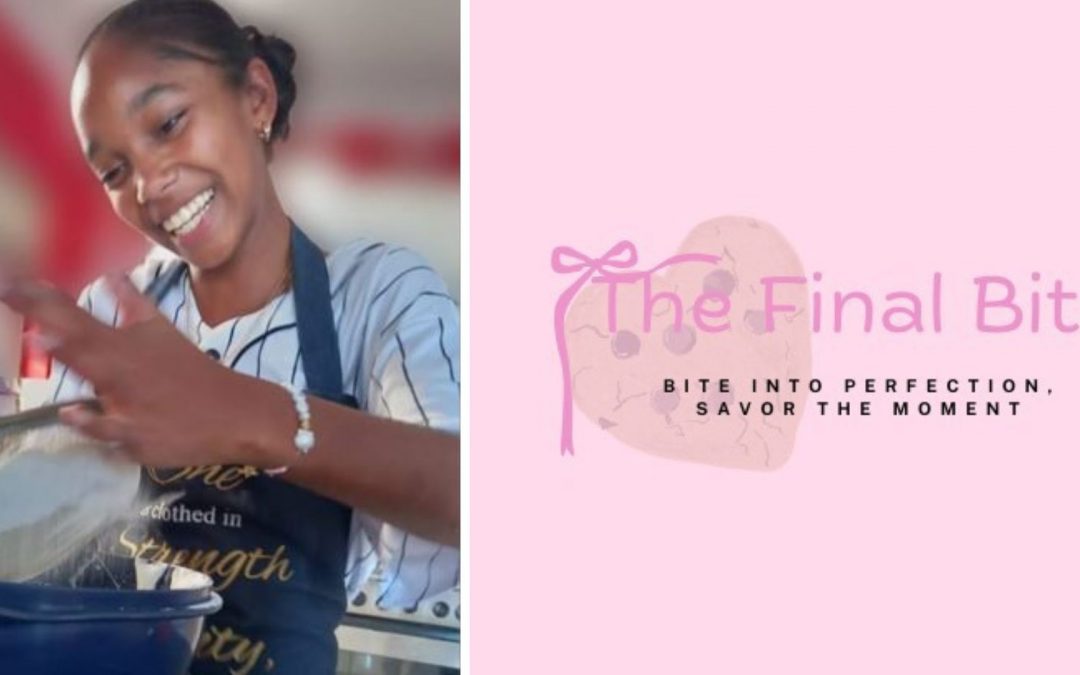
by Tessa Van Rensberg | Dec 15, 2025 | Uncategorised
When 13-year-old Zeeva, from Cape Town, steps into the kitchen, something magical happens. The world quiets, the noise fades, and her mind settles into a calm, joyful rhythm only baking seems to unlock. Mixing, measuring, scooping, and shaping, this is her happy place, the one where she feels most centered, creative, and fully herself.
And at the centre of it all is a dream she’s been nurturing since she was just eight years old:
to build her very own cookie business, The Final Bite, and share her “best cookies you’ll ever taste” far beyond her home kitchen.
Today, that dream is taking its biggest step yet.
A Sweet Soul With a Big Vision
To her mom, Melvina, Zeeva is more than just a talented young baker. She’s gentle, kind, determined, and quietly resilient, the kind of girl who cleans the kitchen after a baking fail and says,
“It’s okay, Mommy, I’ll try again.”
“She has this soft nature,” Melvina says, “but once she sets her mind on something, she gives it her whole heart. She’s my little bestie, my shadow, and honestly, my teacher in so many ways.”
And the dream she holds isn’t just about cookies. It’s about confidence. Creativity. Purpose.
It’s about watching a young girl step into who she was made to be, one batch at a time.
Where It All Began: The Accidental First Bake
Like many great baking origin stories, Zeeva’s includes laughter, a little chaos, and a surprising success.
She remembers baking classic choc-chip cookies with her aunt during a family visit from America. Zeeva confidently read out the ingredients list… not the method… and her aunt added everything exactly as she spoke. Midway through, they burst into laughter, realizing something was very wrong.
But the cookies?
They turned out delicious.
That moment lit something inside her, a spark of joy, creativity, and possibility.
“I loved it,” she says. “It just felt right. Baking makes me feel peaceful and happy.”
From Home Treats to a Budding Cookie Brand
Since then, Zeeva has spent hundreds of hours perfecting her recipes. Her signature crumble-style cookies have become a favourite among friends, teachers, and family. She experiments with flavours, textures, and toppings, always chasing that perfect “final bite”, the one you wish would never end.
She dreams of building a small business, sharing beauty and joy through every batch, and eventually becoming the go-to cookie creator in town.
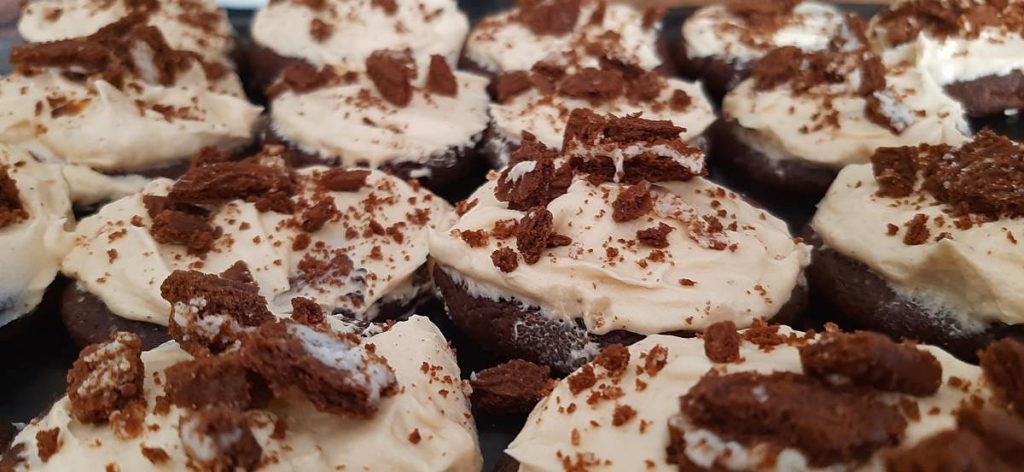
Her mom has watched the transformation in real time.
“It’s emotional,” Melvina says. “I’ve seen her confidence bloom. She explains her ideas with passion. She packs her cookies with such care. It feels like watching her grow into her God-given gifts.”
Faith is deeply woven into this journey.
“I pray over her hands, her ideas, her confidence,” Melvina adds. “I believe God placed this gift inside her, and my job is to nurture it.”
A Full-Circle Moment: Why BackaBuddy Felt Like Home
Melvina works at BackaBuddy, helping campaign creators find hope and possibility in their hardest moments. She has supported hundreds of people in telling their stories, reaching their communities, and believing in second chances.
Starting a campaign for her own daughter felt like a special full-circle moment.
“I’ve guided so many people through their fundraising journeys,” she says. “When Zeeva was ready to take her dream seriously, I knew BackaBuddy was the perfect place. I’ve seen how kindness gathers, how people show up for something meaningful. I wanted Zeeva to experience that too.”
And so, The Final Bite campaign was born, a chance for the community to help a young entrepreneur take her first real step into business.
What Zeeva Needs To Grow Her Cookie Business
To bring her vision to life, Zeeva needs a few essential tools — the kind that help transform big dreams into beautiful bakes.
In a beautiful turn of events, Zeeva was recently blessed with a stand mixer, generously gifted just when she needed it most. But just as she was preparing to advertise her Christmas cookies, their home oven unexpectedly broke, bringing her plans to a sudden pause.
Right now, the most urgent need is a reliable baking oven — the heart of any cookie business, and the one thing Zeeva needs to keep baking, growing, and sharing her creations.
The funds raised will help cover:
-
Baking oven (essential for consistent, reliable baking)
-
Measuring cups & spoons — R150
-
Mixing bowls (set of 3) — R250
-
Spatulas, whisks, wooden spoons — R200
-
High-quality baking trays (2–4) — R500
-
Cooling racks (set of 2) — R300
-
Silicone baking mats / baking paper — R300
-
Starter stock of key ingredients — R2,000
-
Packaging (boxes, ribbons, stickers) — R500
The goal remains R12,000, covering the oven and all the essentials Zeeva needs to take The Final Bite from a home hobby to a small, thriving business — just in time for her first festive cookie season.
A Young Entrepreneur With a Big Heart
When asked what makes her cookies special, Zeeva’s answer is simple and sincere:
“They’re decadent, filled with love, and made to be affordable so everyone can enjoy them.”
Her biggest supporters?
Her friends, who cheer her on, order cookies, and hype her up every step of the way, and of course, her family, who have been her foundation.
Outside the kitchen, she’s a proud soccer lover and a devoted Manchester United fan. But in the kitchen, she is something else entirely, a creator, an artist, an entrepreneur in the making.
Help a Young Dreamer Rise
Right now, The Final Bite is at the very beginning of something special. Zeeva is ready to grow her skills, build her brand, and share her joyful creations with more people, but she can’t do it alone.
By donating, sharing the campaign, or simply cheering her on, you’re helping a 13-year-old girl discover her potential and step boldly into her dreams.
Every spatula, every tray, every ingredient…
Every contribution moves her closer to the dream God placed on her heart.
And who knows? One day, “The Final Bite” may be the cookie Cape Town, or even South Africa, can’t stop talking about.
Support The Final Bite
Help Zeeva take her next big step as a young entrepreneur:
👉 https://www.backabuddy.co.za/campaign/the-final-bite-back-a-young-cookie-boss
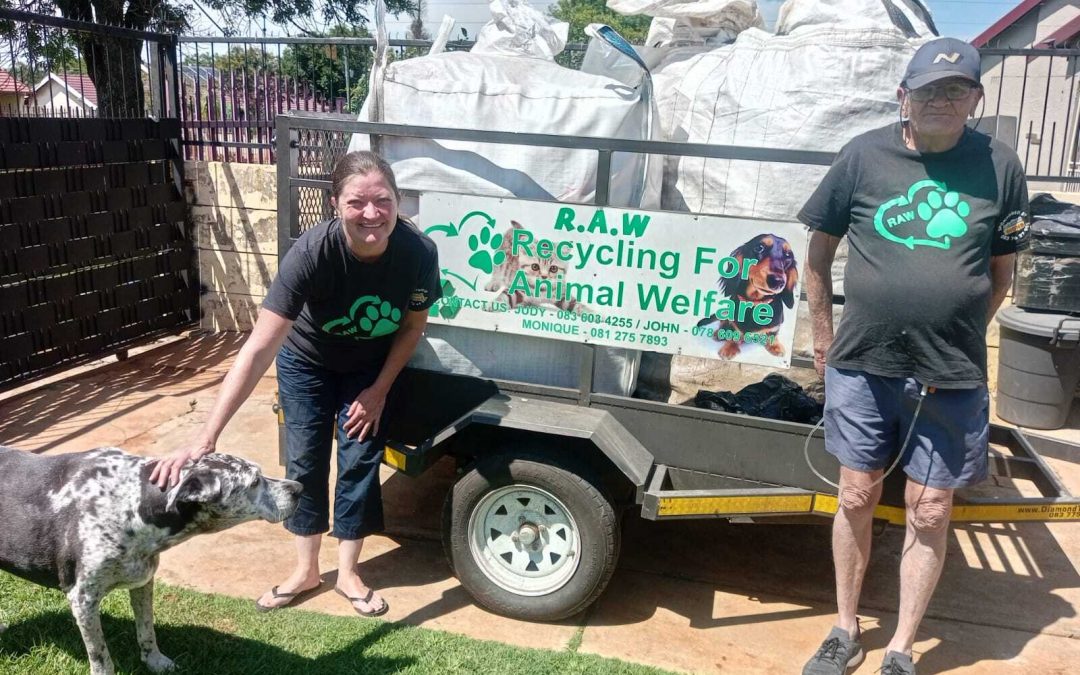
by Zane Groenewald | Dec 4, 2025 | Campaign, Featured
Photo above: John and Judy, and Great Dane, Charles.
Marlands, Germiston, Johannesburg – What began with a tiny, dying puppy on a doorstep has grown into one of the East Rand’s most heartfelt grassroots rescue initiatives. Today, Recycling for Animal Welfare (RAW) — a registered non-profit organisation — is asking the public for support to keep their rescue work going alongside the recycling efforts they have carried out faithfully for years.
Paul: The Puppy Who Started It All
Eight years ago, a freezing, limp puppy later named Paul arrived at the home of Judy Knox (54) and her partner John Ancill (60) in Marlands, Germiston. Severely ill and minutes from death, Paul was rushed to the vet — who later said he would not have survived had he arrived even an hour later.
For months, Paul fought for his life, surviving Parvo, tick bite fever, and gastro. Judy and John stayed beside him through every drip, every setback, every shaky breath.
Against all odds, Paul survived. And when he finally recovered enough to be adopted, they both knew he was already home.
Paul became RAW’s very first rescue — the little soul whose courage shaped the heart and purpose of the organisation.
On 18 July 2025, Paul passed away from liver cancer after eight deeply cherished years. His loss was heartbreaking, but his legacy lives on in every animal RAW helps today.
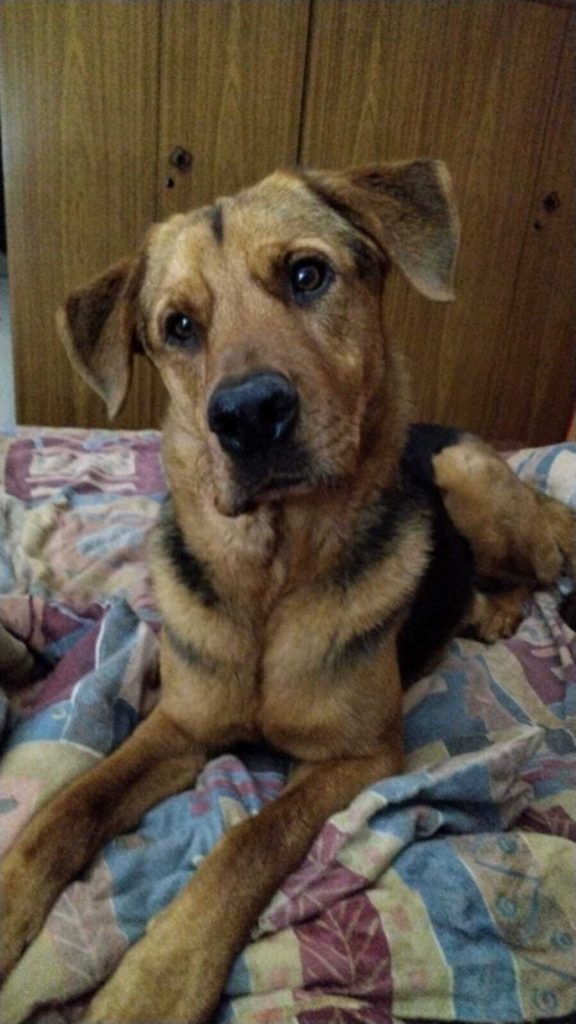
How RAW Was Born — Turning Recyclables Into Lifesaving Care
In 2017, Judy and John wanted a sustainable and dignified way to fund veterinary care for animals in crisis. They had never wanted to ask for donations — they preferred to earn the money needed to help each animal.
So, after their full-time day jobs and every Saturday, they began collecting glass and cardboard across Johannesburg’s East Rand — Germiston, Boksburg, Benoni, Edenvale, Kempton Park, and wherever they were needed. Armed with their small Hyundai i10, they filled it to the roof every week.
Their first load earned R50, but it confirmed that even the smallest beginning could grow into something meaningful.
With the help of a local vet and their small team — Monique (46) and Patrick (77), lovingly known as “G-Dad” — RAW has since recycled more than 750 tons of glass and 75 tons of cardboard. Every cent earned goes directly toward sterilisations, vaccinations, emergency treatment, and rehabilitation.
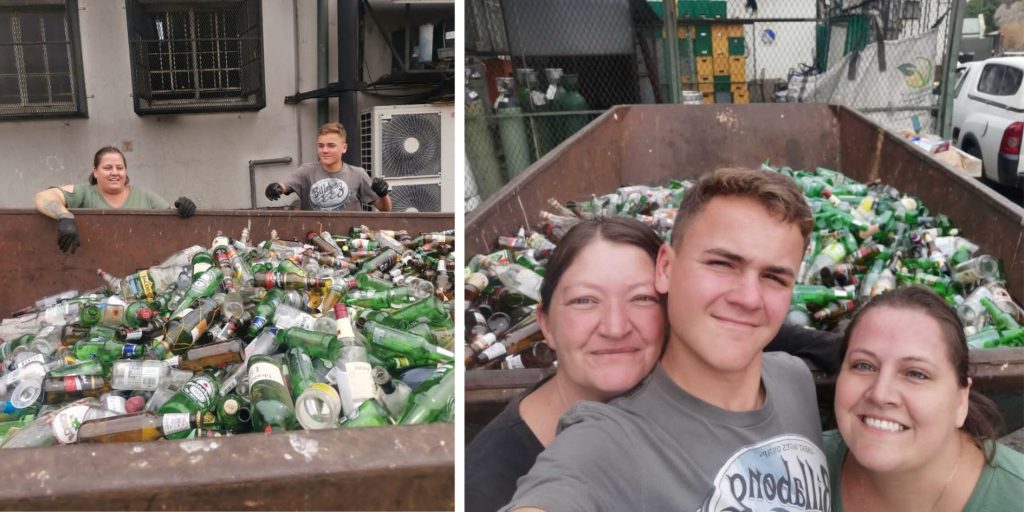
A Growing Need — And Why They’re Asking for Help for the First Time
Despite their enormous effort, recycling yields very little:
- 50c per kg of glass
- R1,20 per kg of cardboard
- 2–3 weeks of collecting = about R1,200
Animals continue arriving every week — frightened, abandoned, injured, or desperately ill — needing urgent veterinary care. RAW’s vet bill now exceeds R50,000, and their account is on hold.
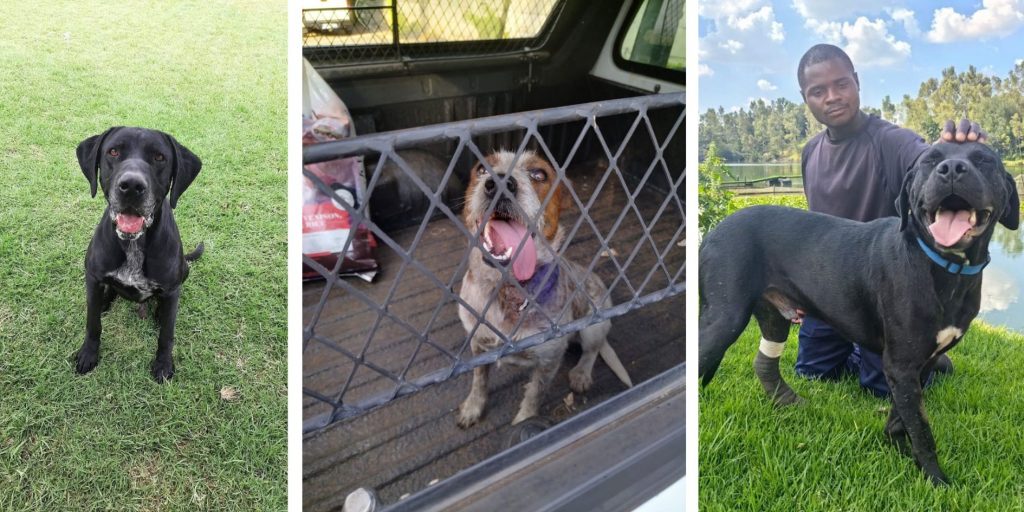
For the first time since RAW began, Judy and John have launched a BackaBuddy fundraising campaign to help cover the growing gap between what recycling brings in and what the animals urgently need.
The campaign will help top up what they already earn through recycling, making sure the vet bill is covered even when emergencies arrive faster than the glass and cardboard can.
Campaign Link: https://www.backabuddy.co.za/campaign/support-recycling-for-animal-welfare
This doesn’t replace their hard-earned efforts — they will still be out collecting after work and every Saturday, just as they’ve done for years.
The campaign simply gives their rescue work a little extra support, so no animal has to be turned away.
So far, almost R10 000, has been raised from 18 donors, a touching beginning — but far more support is needed to reopen their vet account and continue their rescue work.
In Paul’s Honour — RAW Launches Their Monthly Giving Campaign
The BackaBuddy campaign is dedicated to Paul — the brave little dog whose survival inspired RAW’s mission.
Through monthly supporters, Judy and John hope Paul’s legacy will continue helping other animals get the second chance he fought so hard for.
Call to Action: Help Keep Paul’s Legacy Alive
RAW is asking the public to stand with them in honour of the puppy who started everything.
You can help by:
- Making a once-off donation
- Becoming a monthly supporter — the most powerful way to ensure RAW never has to say “no” to an animal in crisis
“Every rand goes straight to the animals — their treatment, their healing, their safety,” Judy says. “We will never stop recycling. This campaign simply helps us bridge the gap so we can keep saving lives, just like we saved Paul.”
Support RAW here: https://www.backabuddy.co.za/campaign/support-recycling-for-animal-welfare
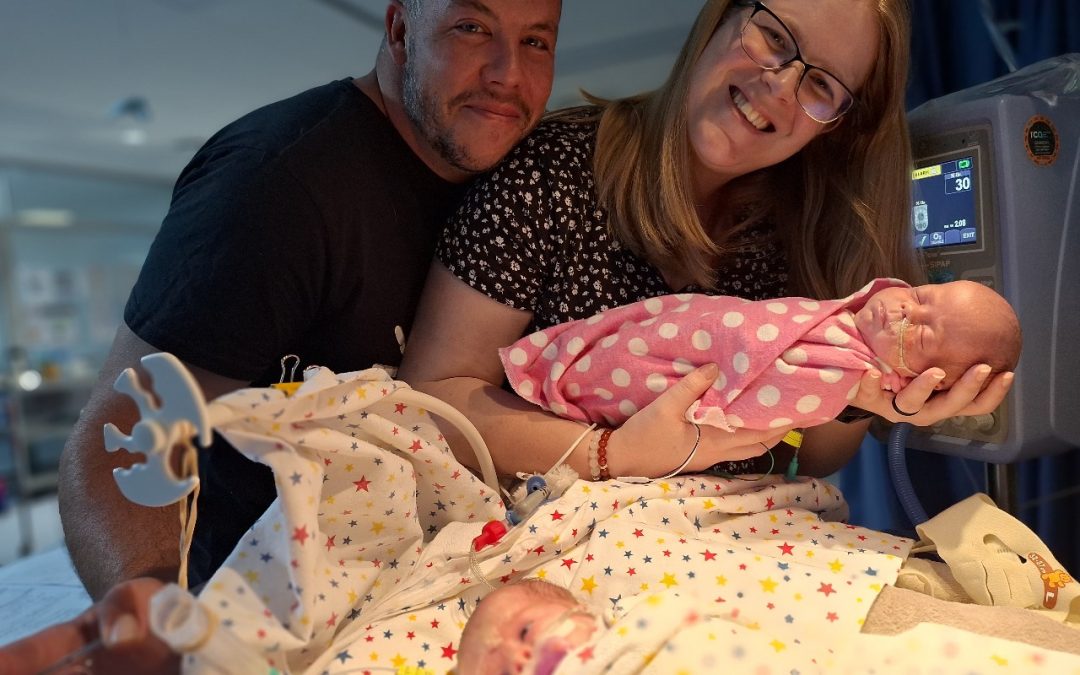
by Tessa Van Rensberg | Nov 14, 2025 | Campaign, Featured
Tiny Miracles: Jenna-Lee’s Journey of Love, Loss, and Hope This World Prematurity Day
Jenna-Lee La Cock (36) from Randpark Ridge, Gauteng, has lived through a journey that reveals the fragility of life – but also the extraordinary strength of a mother’s love. Her path to motherhood began with fertility struggles, continued through a life-threatening pregnancy complication, and today, she stands as the proud mom of two tiny fighters – Selena and Leona NICU Warriors, whose story brings powerful meaning to World Prematurity Day.
A Long and Hopeful Road to Motherhood
For Jenna-Lee and her husband, Uli, the dream of becoming parents began almost as soon as they married.
“Uli and I met a bit later in life, but from the moment I met him, I knew I wanted to have children with him,” she smiles. “We decided to start trying almost straight away.”
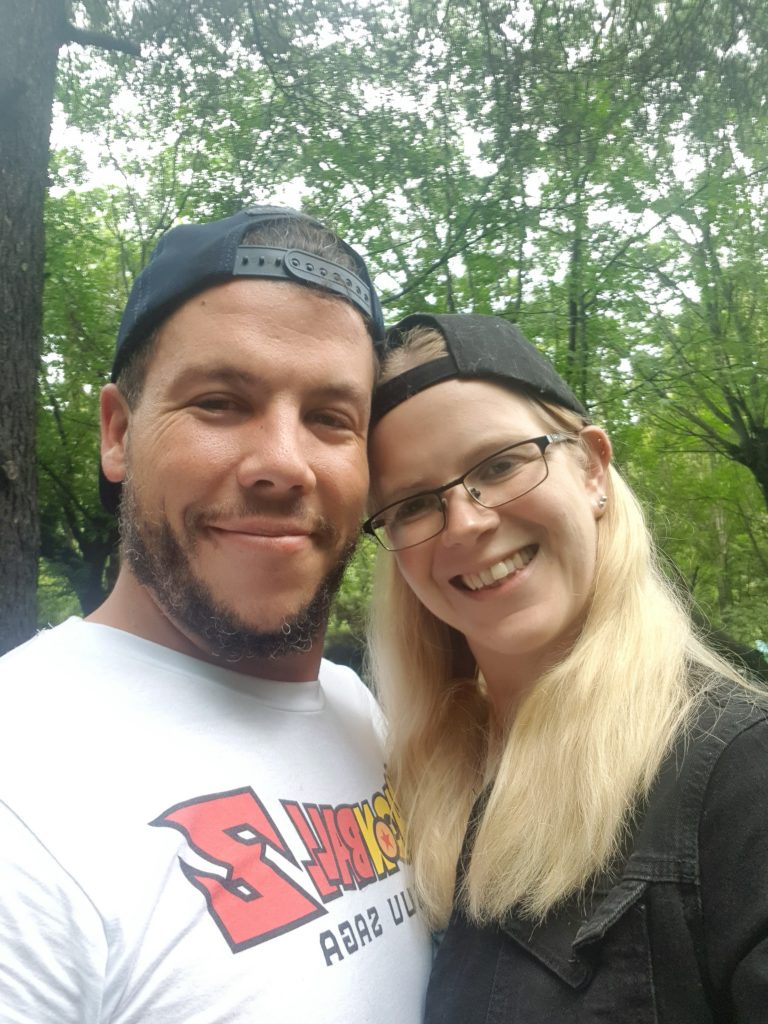
But months passed with no positive test. When Jenna-Lee stopped birth control after years of use, her cycle became irregular. A visit to a fertility clinic uncovered the reasons she feared: adenomyosis and anovulation, meaning her ovaries weren’t releasing eggs.
“It was tough hearing that, but we were determined,” she says.
After five rounds of ovulation stimulation, Jenna-Lee finally received the news they had prayed for – a positive pregnancy test.
“As the doctor moved the probe, we saw what looked like two gestational sacs,” she laughs. “The doctor started laughing, and when we realized – we laughed all the way home. Twins! We felt blessed beyond measure.”
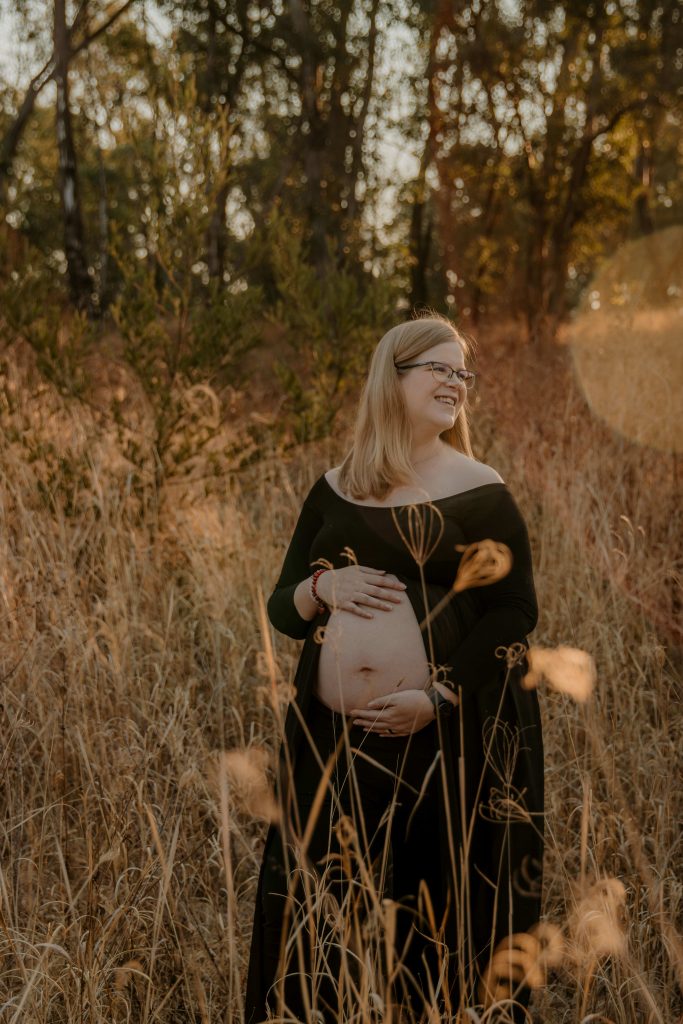
The Day Everything Changed
On 18 August 2025, at 28 weeks and 3 days, Jenna-Lee woke up at 3am in excruciating pain – pain that no medication, no heat, and no shower could ease.
“I got dressed for work but couldn’t get past the agony. I woke Uli in tears, and we rushed to the gynecologist as soon as they opened.”
Blood tests revealed dangerously low platelet levels. Hours later, the diagnosis confirmed their worst fears: HELLP syndrome, a life-threatening pregnancy condition affecting the liver and blood. The only way to save Jenna-Lee and the twins was to deliver immediately.
“I went cold,” she remembers. “I kept thinking, ‘It’s too early – they’re too little.’ I was terrified and heartbroken, but I knew we had no choice.”
Because of the bleeding risk, she couldn’t receive an epidural or spinal block and had to undergo a C-section under general anesthesia.
“I drifted off praying for their safety,” she says softly.
When she woke up in recovery – weak and needing a blood transfusion – she learned that both babies had survived. They were tiny, fragile, and fighting for their lives.
Our Little NICU Warriors
Tiny but fierce, Selena (1.11kg) and Leona (1.1kg) began their journey as NICU warriors.
“Selena needed resuscitation and a ventilator. Leona needed CPAP,” says Jenna-Lee. “Selena later needed PDA surgery and battled pneumonia. Leona survived a life-threatening gut infection. They’re the strongest little humans I know.”
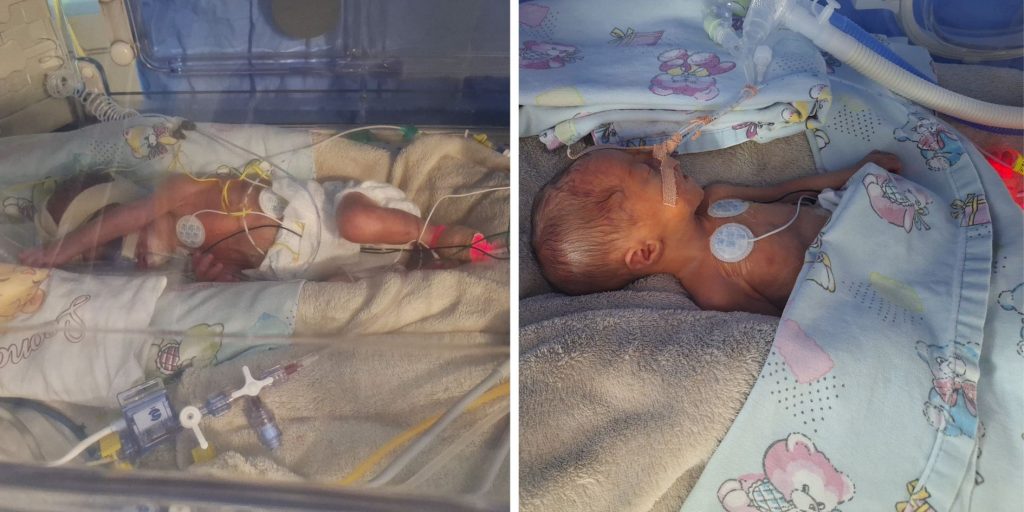
For the first weeks, the beeping of monitors and the hum of ventilators became the soundtrack of their days. Their parents visited daily – sometimes multiple times a day – despite exhaustion, pain, and emotional overload.
Now more than two months later, their journey has taken a new, bittersweet turn.
A Heart in Two Places: The Updated Journey
After more than two months of fighting, the twins’ story reached a painful and beautiful turning point.
On Day 76, baby Selena was discharged, finally strong enough to go home.
“She’s thriving at home,” Jenna-Lee says with a full heart. “Having her home is the biggest blessing.”
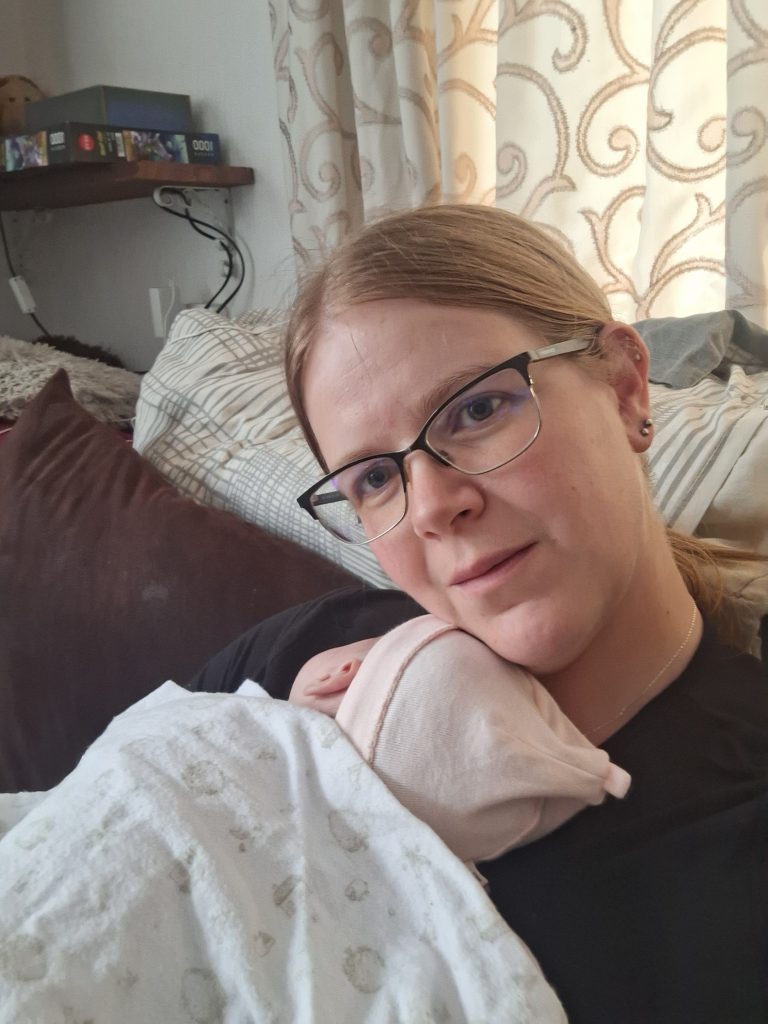
Selena at home with mum
But her younger sister is still in the NICU.
On Day 82, Leona continues to struggle with bottle feeding – something she must master before she can be safely discharged.
“We have tried everything – speech therapy, occupational therapy, paediatric advice, NICU nurses’ tricks, and every bottle on the market,” says Jenna-Lee. “We haven’t found the solution yet.”
This emotional split has been devastating.
“It feels like your heart is broken into two pieces, and you cannot have both pieces together yet,” she admits. “Visiting your child, loving her, holding her – and then leaving her behind every evening – it’s a pain I can’t fully describe.”
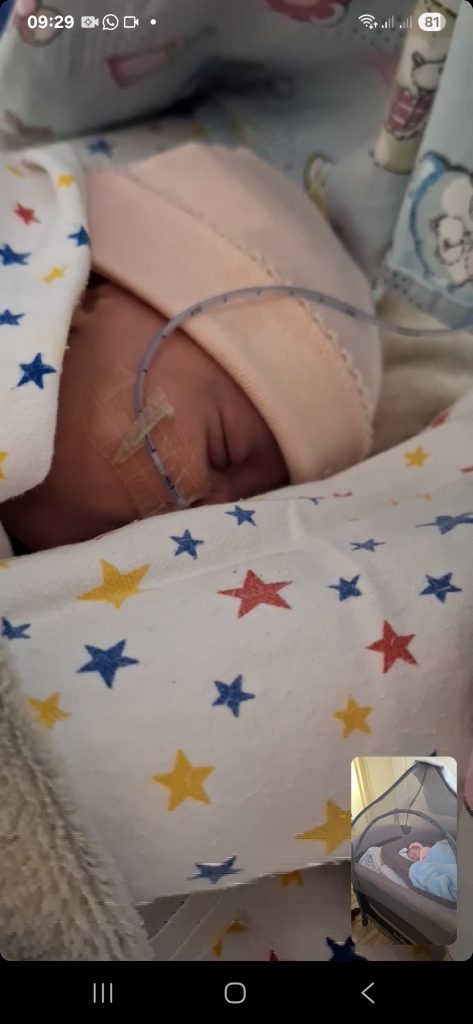
Keeping their hearts together: a video call from the NICU to home brings comfort and closeness
Meanwhile, the next chapter has begun:
out-patient appointments and therapies, which their medical aid no longer covers because their savings are depleted.
“We want the best care for our girls, but we simply don’t know how we’ll afford what’s still ahead,” she says.
The Weight of Financial Strain
The financial pressure on the family has been immense.
- Their medical aid has disputed parts of Jenna-Lee’s hospital stay.
- Some claims for the twins’ care have been rejected.
- Uli lost his income for August while supporting his family at the hospital daily.
- Jenna-Lee is on maternity leave earning half her salary.
- UIF benefits are uncertain and limited.
- Additional unpaid leave will likely be necessary when both girls are home.
“This experience has brought so much fear and uncertainty, but every moment is worth it for my girls,” she says.
Community Compassion Through Crowdfunding
To help ease the growing financial burden, Jenna-Lee created a BackaBuddy campaign titled “Selena and Leona, Our Little NICU Warriors.”
So far, 15 donors have contributed R27,198 toward their R75,000 goal.
“The kindness we’ve received has lifted us up,” she says. “Prayers, food, messages, donations – every act of love has given us strength to keep going.”
A Message for World Prematurity Day – 17th November
This story unfolds as families around the world honour World Prematurity Day, a day dedicated to raising awareness for babies born too soon and the families who walk the NICU journey.
“Premature birth isn’t something you plan for – it’s something you survive,” says Jenna-Lee. “These babies are miracles. Their strength is unmatched. And parents in the NICU hold their fear, love, and hope all at once.”
Her message to other NICU parents is gentle and full of encouragement:
“It’s okay to have bad days. Don’t hide your struggles. But when you walk into that NICU, try to leave the fear at the door. Focus on love- that’s what your babies need most.”
Motherhood, she says, has changed her life forever.
“Being a mom to my beautiful girls makes me want to hand them the world. My purpose now is to guide them, protect them, and cheer them on as they grow into the strong women I already see in them.”
From a long fertility struggle to the emergency delivery of her twins at 28 weeks, from NICU alarms to first cuddles, from fear to fierce love – Jenna-Lee’s journey is a story of hope and unshakeable strength.
As one daughter settles at home and the other fights to join her, the family continues to rely on the kindness of those who believe in their story.
This World Prematurity Day, their journey reminds us that even the smallest babies can inspire the biggest courage.
To support Jenna-Lee, Uli, and their two little NICU warriors, visit their BackaBuddy campaign link here: https://www.backabuddy.co.za/campaign/selena-and-leona-nicu-warriors
Please share their story – because sometimes, a single share can bring a tiny miracle closer to home.

by Tessa Van Rensberg | Nov 12, 2025 | Campaign, Featured
Photo credits: Gift of the Givers
Building Sustainable Support for Those Who Need It Most
[Cape Town, 11 November 2025] — Gift of the Givers has announced the launch of Team Gift, a new monthly giving programme powered by BackaBuddy, designed to generate steady and sustainable support for their life-saving humanitarian work both locally and across the globe.
In a world where crises strike more often and with growing intensity, from conflict and hunger to drought and disaster, Team Gift gives ordinary South Africans a way to stand together consistently, ensuring no one is left behind when hardship hits.
Hope That Never Fades
Disasters, poverty, and limited access to healthcare continue to affect millions each year. Team Gift was created to provide consistent, reliable support, ensuring that when emergencies arise, help can arrive without delay.
The programme’s sustainable funding model allows Gift of the Givers to respond faster, plan further ahead, and maintain essential care long after initial relief efforts have ended.
From a Riverbed in Mozambique to a Movement of Hope
The inspiration behind Team Gift reaches back to 1990, when a young Dr Imtiaz Sooliman travelled with the Islamic Medical Association to Mozambique during a time of war and drought.
While visiting Nacala Hospital, he noticed two frail children digging into a dry riverbed and drinking the muddy water that seeped through the soil. The image stayed with him, a painful reminder of how easily we take clean water and safety for granted, and how deeply ordinary people can suffer in times of crisis.
Determined to act, Dr Sooliman wrote about what he had witnessed and shared it through phone calls and fax machines, his version of crowdfunding at the time. Within just five days, friends and colleagues helped him raise $100 000 (USD), enough to provide 30 boreholes and vital malaria medication.
That first humanitarian mission became the foundation for Gift of the Givers, proving that when people unite around compassion, extraordinary things happen.
Today, more than three decades later, that same spirit of unity and collective giving lives on through Team Gift, a call for South Africans to join a community of monthly donors ensuring the organisation remains ready to respond whenever and wherever help is needed.
How Team Gift Works
From as little as R50 per month, donors can pledge recurring contributions via BackaBuddy, joining a growing global movement of consistent givers. All donations are pooled and distributed across Gift of the Givers’ key humanitarian projects, supporting food security, sanitation, healthcare, education, disaster response, and more.
Because the funding is stable and recurring, Gift of the Givers can plan ahead, reach further into crisis zones, and sustain life-saving support long after the headlines fade.
To celebrate the spirit of collective compassion, the organisation is calling on supporters around the world to be among the first 1 000 members of Team Gift — a founding community of monthly donors recognised for their commitment to ongoing, measurable impact.
Founding Member Benefits
When individuals join Team Gift as Founding Members, they will gain access to a range of exclusive benefits designed to bring them closer to the organisation’s life-saving work.
Founding Members will receive live, real-time updates through the Team Gift WhatsApp Community, including direct messages, photos, and videos from Gift of the Givers’ relief teams on the ground, offering a rare, behind-the-scenes view of humanitarian action in progress.

Photo credits: Gift of the Givers
Why Now
Unpredictable crises demand reliable compassion. Too often, projects fade once immediate relief ends, leaving communities vulnerable. Team Gift closes that gap, turning one-time generosity into continuous care.
Ronelle Mungaroo, Communications Manager at Gift of the Givers, explains:
“Team Gift represents the heart of our mission — a community of consistent givers who ensure that when the next crisis arrives, we are already prepared. Every monthly donation, no matter the size, helps sustain the lifeline that keeps hope alive.”
Catherine Swanepoel, Chief Growth Officer at BackaBuddy, adds:
“Recurring giving is one of the most powerful ways South Africans can make an impact. Through Team Gift, BackaBuddy is proud to support Gift of the Givers in building a community of everyday heroes who make long-term humanitarian work possible.”
Join Team Gift, Become a Founding Member
Gift of the Givers and BackaBuddy invite South Africans to transform compassion into action by joining Team Gift today.
About Gift of the Givers
Founded in 1992, Gift of the Givers is Africa’s largest disaster response NGO. The organisation has delivered more than R6 billion in humanitarian aid across 47 countries. Its wide-ranging projects include food security, water provision, healthcare, education, and disaster relief, as well as infrastructure improvements in disadvantaged South African schools and rapid local disaster response efforts that strengthen resilience at home and abroad.
The Gift of the Givers Foundation is the largest disaster-response non-governmental organisation of African origin on the African continent. The essence of its presence is to bring hope and restore dignity to the most vulnerable.
About BackaBuddy
BackaBuddy is South Africa’s leading crowdfunding platform, enabling individuals and organisations to raise funds securely for causes they care about.
Since its inception, BackaBuddy has helped raise over R610 million for thousands of campaigns across South Africa — supporting individuals, families, and charities in times of need.
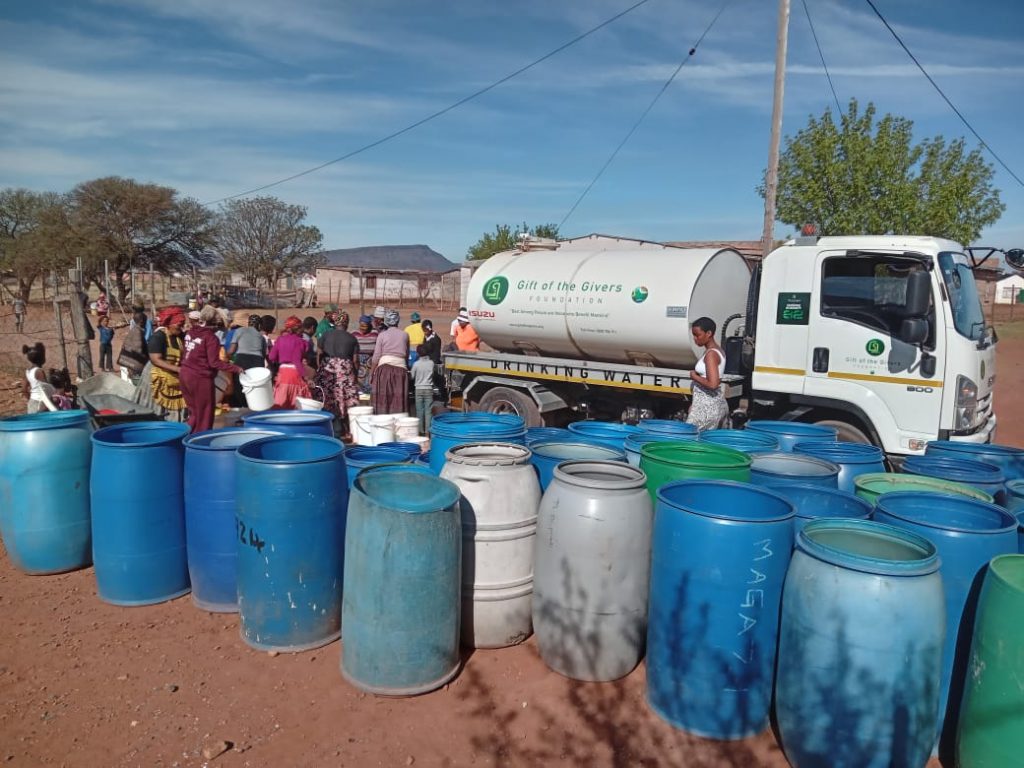
Photo credits: Gift of the Givers
By powering recurring donations, BackaBuddy helps South Africans sustain meaningful change and provide steady support for critical initiatives like Team Gift.
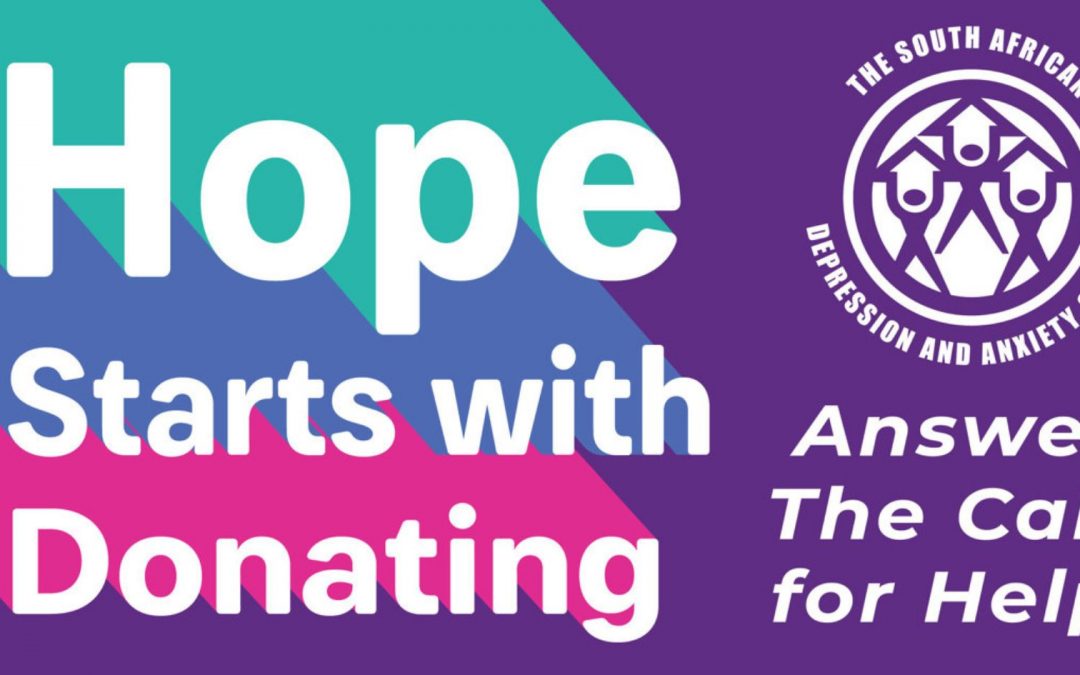
by Tessa Van Rensberg | Nov 12, 2025 | Campaign, Featured
The South African Depression and Anxiety Group (SADAG),
A beacon of hope for countless individuals, is based in South Africa – its impact reaches across every province, home, and heart that has ever faced the darkness of mental illness. For over 31 years, SADAG has been the country’s leading mental health NGO, answering calls for help every day and night of the year. Through donations, and crowdfunding, BackaBuddy has partnered with SADAG , in an effort to help raise awareness around mental health and the amazing work the organisation does.
Answering the Call for Help
For SADAG, every ring of the phone represents a life – someone in crisis, reaching out as a attempt to be seen, to be heard, to be saved. Their
24-hour Suicide Crisis Helplines are often the only lifeline for thousands of South Africans who find themselves in moments of despair
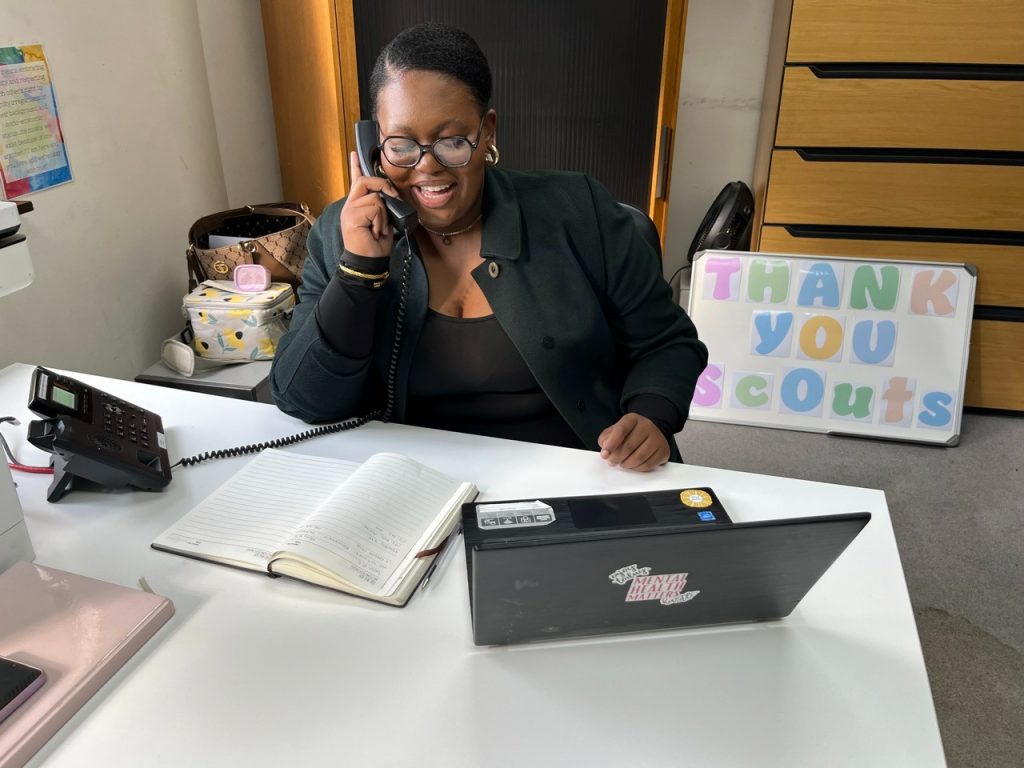
As SADAG’s Development Manager, Fatima Seedat, explains, “‘Answer The Call for Help’ means more than picking up a phone – it’s about showing up for someone at the exact moment they feel invisible, hopeless, or alone.”
Every month, SADAG faces the monumental task of keeping their helplines open. Their operating costs reach R180,000, ensuring that trained counsellors can continue to provide free, compassionate support to every caller. To sustain this service, they’ve launched a crowdfunding campaign on BackaBuddy, aptly titled “Answer The Call for Help”, which has already raised over R12,610 from 24 generous donors.
Each contribution, no matter how small, keeps hope alive.
As Fatima shared, “When a caller is ready to end their life, that one answered call can change everything.”
She recounts the story of a young man who phoned them one night, moments away from taking his own life. The counsellor’s gentle patience and empathy turned that moment of despair into survival – saving his life through connection, compassion, and care.
A Partnership for Hope
For BackaBuddy, partnering with SADAG is not just a collaboration – it’s a commitment to compassion. The platform, known for connecting everyday heroes with causes that matter, has joined forces with SADAG to help raise both funds and awareness for mental health.
This partnership underscores a shared mission: ensuring that no person’s cry for help goes unanswered. Together, they aim to break the silence surrounding mental health and inspire South Africans to take part in the movement – by donating, crowdfunding, or simply showing kindness.
As SADAG puts it, “Through this collaboration, every donation becomes part of something bigger: a shared effort to ensure that no cry for help goes unanswered. But it’s not only the callers who benefit — giving and extending kindness also nurtures the giver’s own mental wellbeing.”
The Healing Power of Giving
Science agrees: giving is good for your mental health. Acts of generosity – from volunteering to donating – trigger the release of endorphins, dopamine, and oxytocin, often called the “happiness hormones.” These natural chemicals help reduce stress, combat anxiety, and foster a deeper sense of connection.
It’s what BackaBuddy calls “Growing Givers” – the idea that when you give, you grow. Giving to SADAG isn’t just about keeping the phone lines open; it’s also about creating ripples of kindness that heal both the receiver and the giver. As SADAG notes,
“When you help someone, you also help yourself.”
Becoming a Champion for Mental Health
Anyone, anywhere in South Africa, can become a champion for SADAG on BackaBuddy. You don’t have to be a counsellor to save lives – you can host a charity run, arrange an awareness day, and then back your efforts with a BackBuddy campaign. Every initiative contributes to a collective promise: that every call for help will be answered.
And for those who are struggling themselves, SADAG offers this reminder:
“Reach out for help if you need it, even if it’s just to say, ‘I’m not okay.’ Answering the call doesn’t always mean being on the helpline – sometimes it’s simply choosing kindness, choosing connection, choosing to care.”
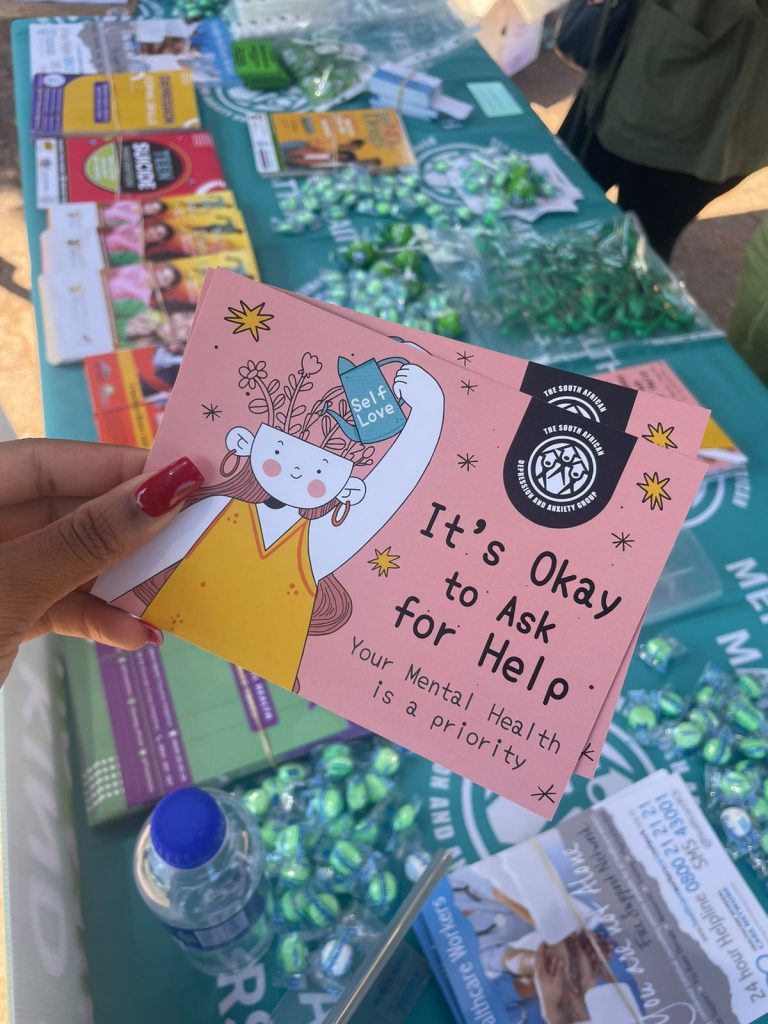
A Shared Mission of Hope
In a world where so many feel unseen, this partnership between SADAG and BackaBuddy represents unity, hope, and humanity at its best, reminding South Africans that compassion is a strength – and that through giving, we not only lift others, but we lift ourselves.
To support SADAG, visit their BackaBuddy campaign link here:
👉 https://www.backabuddy.co.za/campaign/answer-the-call-for-hope
Share the story, donate if you can – even as little as R50 can save a life – and help ensure that no call for help ever goes unanswered.

















